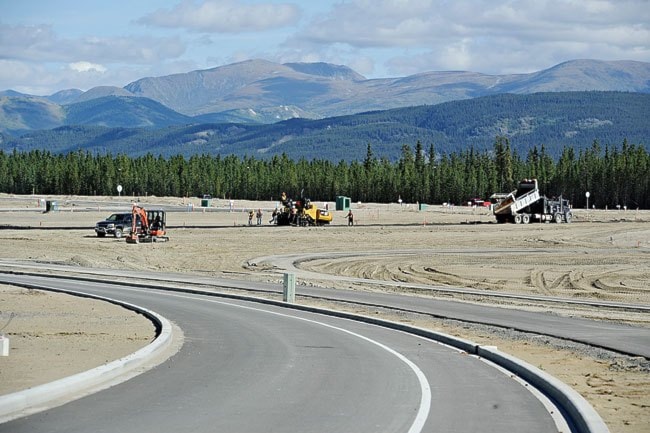The City of Whitehorse has partnered with Yukon Electric Company with an eye to constructing an alternative energy project in the new Whistle Bend Subdivision.
The Borehole Thermal Energy Storage system uses solar collectors to heat water, which is then pumped deep underground where it’s stored for use in the winter.
“The city has always really envisioned Whistle Bend to be a sustainable community,” said Shannon Clohosey, the city’s sustainability projects manager.
Several years ago the city looked at using geothermal heat pumps in the subdivision, but was never able to find the right combination of funding resources and partners, said Clohosey.
Earlier this year the city prepared a pre-feasibility study on this borehole storage system.
“It’s still using energy from the earth, it’s just that you’re storing solar energy in the earth and then withdrawing that, almost like a battery,” said Clohosey.
That piqued the interest of Yukon Electric, which came on board and agreed to pay for a full feasibility study.
“That was great,” said Clohosey, “It really gave the project some legs.”
Yukon Electric’s affiliate company, ATCO Gas, has some expertise with this kind of technology.
For the last five years it’s been using a borehole storage system to heat homes in Okotoks, Alta.
The Drake Landing Solar Community uses solar energy to meet 90 per cent of the space heating requirements for 52 homes.
Solar collectors - which collect heat by absorbing sunlight - are placed on the roofs of homes. They are used to heat a glycol-water mix, which is pumped down 144 boreholes that reach 37 metres into the earth, where it’s stored at up to 80 degrees Celsius.
Using that energy to heat those homes saves about five tonnes of greenhouse gas a year.
The system being considered for Whistle Bend is much larger.
“The target size is 800 residences,” said Dwight Redden, general manager of Yukon Electrical.
The technology would be applied to phases three to eight of Whistle Bend, as most of the infrastructure is already laid for the first two phases.
“They’ve looked at scaling it up for a major city in the south,” he said. “The challenge there is they’ve got access to low cost natural gas that they’re competing with for heating homes, so what they’ve found is it’s just not viable with such low gas prices there.”
With the high cost of energy in the North, this kind of technology is a much more attractive option, even with the inclement weather.
“Even though we’ve got dark winters, we’ve got a nice long summer, so we can store a lot of solar energy during that period,” he said.
It’s too soon to say how much the project will cost or what kind of rate homeowners on the system will have to pay to heat their homes, or even if it’s viable for the subdivision. All of that will be worked out in the feasibility study, which is set to be completed next spring.
Contact Josh Kerr at
joshk@yukon-news.com
